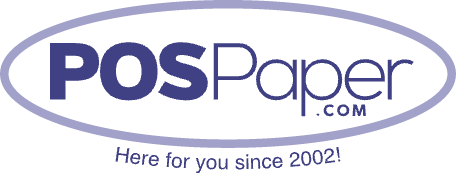
Printing on Sticky-Back Thermal Paper: A Practical Guide
Sticky-back thermal offers rapid printing, generates sharp images, and features an adhesive backing that facilitates easy application. For optimal results, it is essential to manage the paper appropriately and configure your printer correctly.
Understand Sticky-Back Thermal Paper
Sticky-back thermal paper has a heat-sensitive coating on one side and adhesive with a peel-off liner on the other. It is used for labels, tags, shipping slips, and product identification. Popular industries include retail, logistics, healthcare, and food service.
The main advantage is speed. You do not need ink or toner. Heat does the work, which keeps costs low and reduces maintenance.
Preparing the Printer
Before loading sticky-back thermal paper, check your printer specifications. Some models require direct thermal rolls, while others need thermal transfer with a ribbon. Always confirm compatibility.
Clean the print head with a thermal cleaning pen or approved cleaning solution. Dust and residue reduce print quality and shorten the life of the print head. Check the platen roller for adhesive buildup. A sticky roller affects feeding and alignment.

Loading Sticky-Back Thermal Paper
- Power off the printer.
- Open the cover and remove any used roll.
- Place the new roll on the spindle with the adhesive side facing down.
- Thread the paper through the guides. Make sure the liner side faces the print head.
- Pull the paper out slightly to align.
- Close the cover and power on. Run a test print to confirm alignment.
Correct orientation is essential. If the roll is reversed, the printer will not produce an image.
Printer Settings for Sticky-Back Paper
Adjust the printer settings to match the paper size and type. Use the control panel or connected software. Select the correct roll width and adjust print density for clear, sharp text.
Do not use high heat settings unless necessary. Excessive heat can cause smudging or shorten the life of the paper.
Tips for Quality Printing
- Store rolls in a cool, dry place away from sunlight. Heat and humidity damage the coating and adhesive.
- Do not bend or fold rolls before loading. Creases lead to print errors.
- Use fresh rolls. Old paper loses adhesive strength and produces faded prints.
- Avoid touching the coated side with bare fingers. Oils affect image quality.
Applying Sticky-Back Thermal Labels
After printing, peel off the liner carefully. Apply the label on a clean, dry surface. Smooth it down to avoid air bubbles. For long-term use, press firmly on the edges.
If applying to curved surfaces, use smaller labels. Large labels may peel off if the surface bends.
Advantages of Sticky-Back Thermal Paper
- Fast printing without ink or toner
- Lower cost of ownership
- Easy peel-and-stick application
- Compatible with many mobile and desktop printers
- Clear images suitable for barcodes and QR codes
Final Thoughts
Always use sticky-back thermal paper for tasks that require efficiency and ease of use. Adhere to the correct loading and handling procedures to guarantee clear prints and robust adhesion.
Also by properly storing your rolls and routinely cleaning your printer, you enhance the longevity of both the paper and the printer.
